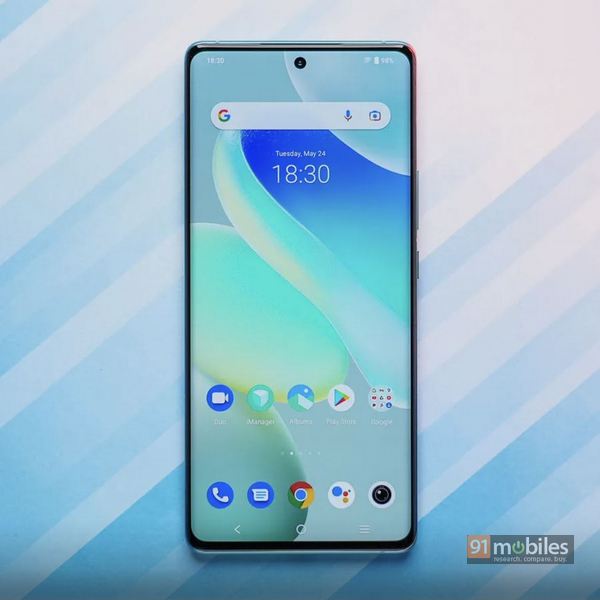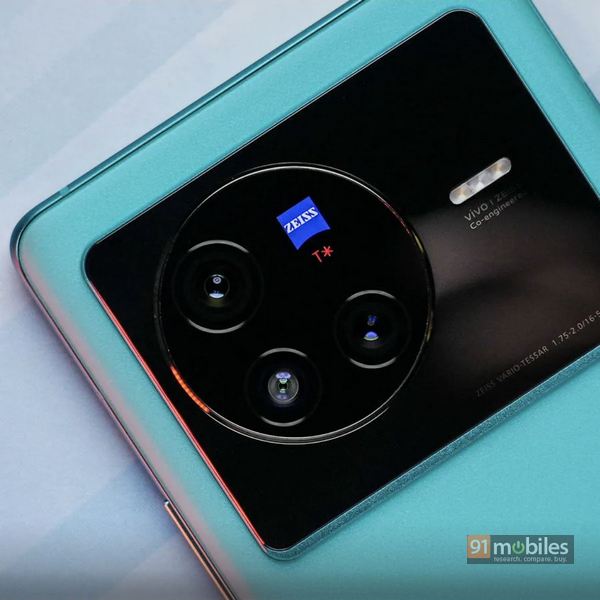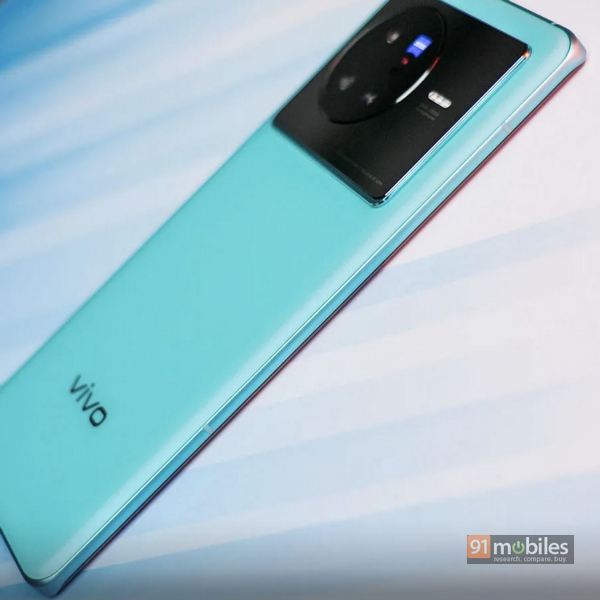Vivo X80 review: smartphone perfection? | 91mobiles.com
Vivo has just released its flagship smartphone lineup for the year in the form of the Vivo X80 series. It consists of two phones, namely the Vivo X80 5G and the X80 Pro 5G (review). While the latter is a true-blue flagship that comes with all the bells and whistles you can expect, I have with me the former. Priced starting at Rs 54,990, it lands in the premium territory, and despite the absence of the ‘Pro’ suffix, borrows a fair bit from its more accomplished sibling.
The X80 is also the first in the country to come with MediaTek’s most powerful chipset to date, i.e. the Dimensity 9000. I have done a comparison between the SoC and the best on offer from Qualcomm which you can read here. The Vivo X80 5G does take a large chunk out of your wallet and it stands to reason that only a thorough review can tell if the device is worth its sizeable price tag. Let’s find out together in this detailed breakdown of the Vivo X80 5G.
Verdict
If it is the best camera, performance and design you are looking for under Rs 60,000, then there is nothing better in the market than the Vivo X80. However, the device does get bogged down by average battery life and a bloatware-ridden software interface.
The lowdown
- It isn’t an overstatement to declare the X80 as one of the most well-refined smartphones in terms of design. Everything about the phone’s exterior oozes class and subtle elegance. Whether it is the smooth matte finish on the back glass, the gently sloping curves, the super-thin chassis, or the obnoxiously good Urban Blue colour scheme, the Vivo X80 is a head-turner without a doubt. Vivo says it has used a combination of fluorite AG glass and an anti-glare coating to provide a subtle yet unique feel to the back panel. Personally, I feel it is criminal to slap a case on the back but if you have butterfingers, Vivo has provided a sturdy case inside the box.

- In terms of weight, the device tips the scale at 206g and its thickness is measured at 8.3mm, both of which are pretty standard figures in the flagship world. The camera module is a massive slab slightly raised from the back panel with a circular housing that contains three lenses and the Zeiss branding signifying Vivo’s partnership with the iconic optics brand. There’s no headphone jack anywhere on the X80, which isn’t all that surprising… but inside the box, you do get a pair of wired USB C earphones. The earpiece up top doubles up as the secondary speaker to provide stereo sound, authentication is handled by an in-display fingerprint sensor and on the bottom, there is the usual USB C port.
- The viewing experience on the X80 is easily on par with devices in the same price bracket. Apart from sharp curvature on the sides, a design choice I personally don’t prefer, the X80 packs in a stellar display. The screen measures 6.78-inch diagonally with barely-there bezels surrounding it, giving the device an expansive screen area to play around with. It is an E5 AMOLED panel which is the industry standard on flagship devices and it refreshes at 120Hz while sticking to FHD+ resolution.

- I would’ve loved a QHD+ display and LTPO 2.0 would also have been a big plus, but I don’t think anyone but the most ardent smartphone enthusiasts would even notice these omissions. The screen is HDR10+ and WideVine L1 certified on OTT platforms like Netflix and Amazon Prime. Apart from that, the peak brightness of 1,000nits comes in handy when viewing the device under extreme sunny conditions. The punch hole on the display’s top centre is unobtrusive and the 240Hz touch latency improves the panel’s responsiveness for a better gaming experience.
- Vivo has talked a great deal about the X80 series’ supreme optical capabilities that have been carried over and improved from last year’s X70 lineup. This time around, along with the partnership with Zeiss, the X80’s camera stack includes a 50MP Sony IMX866 primary shooter with OIS, a 12MP telephoto lens with 2X optical zoom, and a 12MP ultra-wide shooter that can also do detailed macro photography. Talking a bit about the image taking capabilities of the primary sensor in daylight conditions, I have to say that it is leaps and bounds ahead of what the competition has to offer.

- The precision in detailing and expansive dynamic range is quite unmatched from what I’ve seen. The odd moments of oversaturation are usually present when dealing with Vivo phones but I have to say the colour science does add an Instagram-ready flare to shots. From pinpoint focus to superfast shutter speeds to the latent exposure calibration capabilities, the camera can hardly do any wrong. The presence of OIS also gives stability to shots and counters any shake while shooting videos.

- Talking about the Zeiss mode baked into the camera UI, photos become a lot more lively with better representation of skin tones, facial details and AI-based colour enhancements that upscale your shots in an appealing fashion. Most of the images that I’ve taken on the X80 do have the Zeiss mode enabled. Portrait images mostly have flawless edge detection that blends immaculately with a soft adjustable background blur.
- The only time I did see the former falter was in a rather low-light environment. Apart from that macro photography is also super detailed, allowing me to approach the subject in close proximity. Ultra-wide images have a slightly warmer colour temperature but lack any significant warping around the edges while keeping strong focus in most of the frame. As for the 2X telephoto lens, I sparingly used it to capture subjects not too far from my standing position and came away with favourable results.


- There are a few video-centric features from the X80 Pro that make their way onto the Vivo X80 as well. Horizontal Line Stabilization is a feature that does impress me allowing extreme stability on videos even when you violently shake the phone. However, it doesn’t work on anything more than 1080p @ 30fps. There are other modes to fiddle around with as well such as Cinematic Video mode, Pro mode and more which can supplement your video shooting experience. The 32MP selfie camera up front is also one of the best in the business although it still employs a bit of facial oversharpening.


- Vivo has used a special V1+ imaging chip to help the device in low-light conditions and whether it is the chip’s inclusion or the primary sensor’s superiority or even Dimensity 9000’s ISP, the Vivo X80 has mastery when night falls. Even before the image is clicked the viewfinder illuminates the scene quite aggressively to show details that are missed by the naked eye. The final result, even without activating Night mode, is very pleasing and an accurate representation of what is in front of me.
- The sensor can miss a beat here and there in terms of getting the focus right, but when it does I don’t think I’ve seen a single overprocessed or underexposed image when the Night mode is on. The manual exposure meter works like a charm giving immaculately good detailing in the shadowy areas of the frame. Some overprocessing in areas of extreme darkness is to be expected but overall the night photography is excellent.

- I have already talked about how the MediaTek Dimensity 9000, debuting on the Vivo X80, can be considered one of the fastest chips on the planet. The device has Antutu and Geekbench scores which are the highest I’ve seen to date. I also ran the CPU Throttle benchmark to look at the thermal stability of the SoC and came away mildly impressed. There’s no point explaining how well the device can handle day-to-day tasks as nowadays flagship smartphones can accomplish almost any performance-oriented task without problems.
- What’s more, the Vivo X80 is also graphically quite adept with BGMI getting an option of 90fps frame rate with Smooth graphics settings. I did game for a couple of hours on the device and while the performance is commendable, the device loses a lot of battery life trying to maintain the frame rate. Other aspects of the device include up to 12GB of LPDDR5 RAM and 256GB of UFS 3.1 storage which is non-expandable.

- The stereo speakers up front are not the best in the business but they get the job done in terms of volume levels and clarity of sound. As for the in-display fingerprint sensor, nothing on the market will beat the iQOO 9 Pro and X80 Pro’s speed and accuracy, but the Vivo X80 is not too far behind. It can also do a splendid face unlock although it is not as secure as Apple’s Face ID. A shoutout also to the X80’s amazing haptics, thanks, in part, to the X-Axis linear motor.
- 5G services should be accessible on the phone by this year’s end if the necessary telecom infrastructure is put in place. For the software side of things, Vivo’s FunTouchOS 12 based on Android 12 is operating on the device. You can head over to my colleague’s Vivo X80 Pro review for more details on the software experience.

- Battery-wise the phone has a 4,500mAh cell that can be considered slightly low in capacity than what current flagships have on offer. This was evident when I played BGMI at Extreme (60fps) frame rate option and HDR graphics. Within just 30 minutes about 14 percent of the battery had drained. I also watched three episodes of Stranger Things (approximately 1 hour each) at 70 percent brightness and saw nearly 40 percent battery gone.
- Even though PCMark’s Battery test did churn out a decent score of 13 hours 32 minutes, I still feel that improvements can be made in the battery department. The 80W fast charging, however, can alleviate some concerns by juicing up the phone from 0-100 percent in less than 40 minutes.
Final verdict

It would appear that the Vivo X80 leaves very few stones unturned in its quest to become the best phone under Rs 60,000. It does miss out on an IP rating and doesn’t offer wireless charging either. However, I believe that the camera setup on the device is unrivalled as is the device’s performance capabilities. Display-wise, the inclusion of LTPO 2.0 could have helped a bit with the device’s average battery life but as far as the viewing experience goes, there is nothing left to complain about. I can say that if you can get by without the extensive photography features offered by the Vivo X80, then the Realme GT 2 Pro or Moto Edge 30 Pro will meet your needs at lower price points. However, for a great overall experience, there would be no better phone than the Vivo X80 at the moment.
Editor’s rating: 4 / 5
Pros:
- Premium design
- Stunning display
- Great performer
- Excellent cameras
Cons:
- Ships with bloatware
- Battery life could be improved
- No IP rating
For all the latest Technology News Click Here
For the latest news and updates, follow us on Google News.
Read original article here